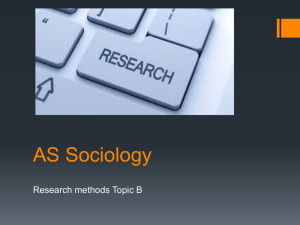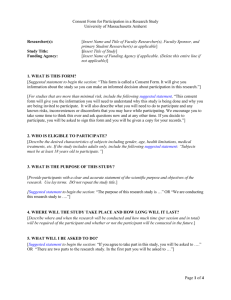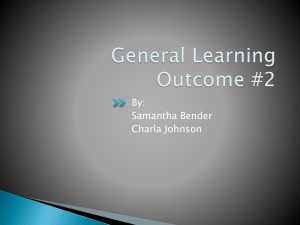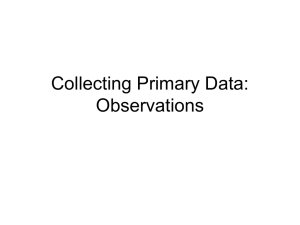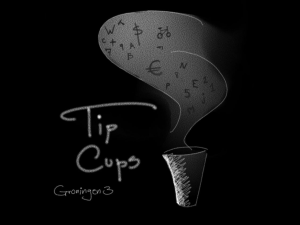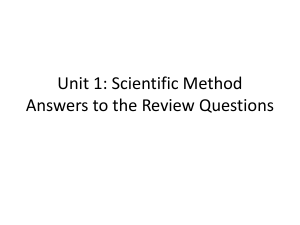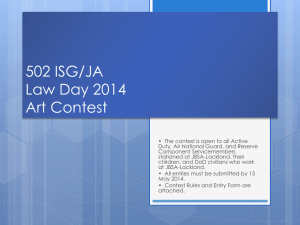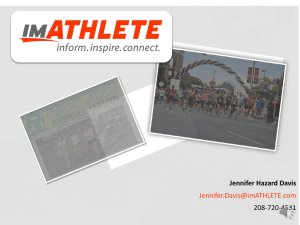Internal and External Validity and Method of Control
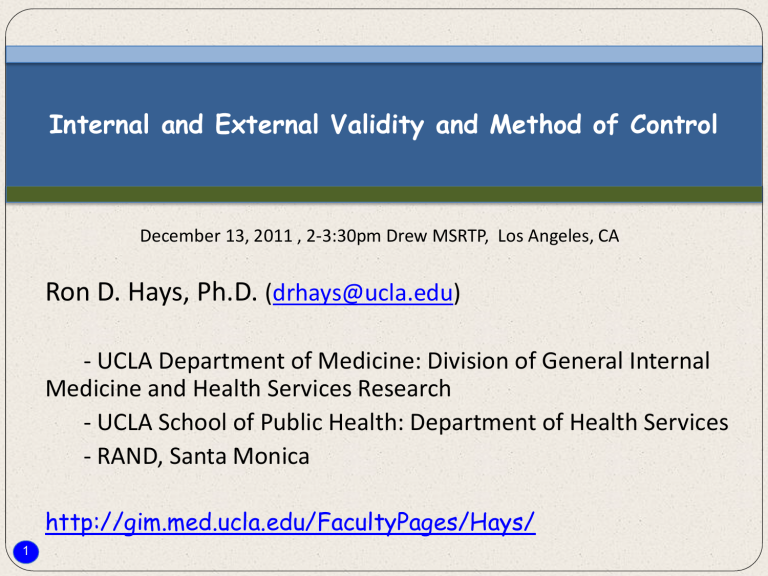
Internal and External Validity and Method of Control
December 13, 2011 , 2-3:30pm Drew MSRTP, Los Angeles, CA
Ron D. Hays, Ph.D. ( drhays@ucla.edu
)
- UCLA Department of Medicine: Division of General Internal
Medicine and Health Services Research
- UCLA School of Public Health: Department of Health Services
- RAND, Santa Monica
1 http://gim.med.ucla.edu/FacultyPages/Hays/
2
Listed below are a few statements about your relationships with others. How much is each statement TRUE or FALSE for you?
I am always courteous even to people who are disagreeable.
There have been occasions when I took advantage of someone.
I sometimes try to get even rather than forgive and forget.
I sometimes feel resentful when I don’t get my way.
No matter who I’m talking to, I’m always a good listener.
3
Give yourself 1 point for each item that you answered as shown below
(Possible score range is 0-5)
I am always courteous even to people who are disagreeable. DEFINITELY TRUE
There have been occasions when I took advantage of someone. DEFINITELY FALSE
I sometimes try to get even rather than forgive and forget. DEFINITELY FALSE
I sometimes feel resentful when I don’t get my
way. DEFINITELY FALSE
No matter who I’m talking to, I’m always a good listener. DEFINITELY TRUE
4
How many people scored?
• 0 points? _______
• 1 point? _______
• 2 points? _______
• 3 points? _______
• 4 points? _______
• 5 points? _______
• Mean was 1-2 points in MOS
5
Basic Concepts
• Internal validity
– Data support conclusions about the hypothesis in the specific instance studied
• External validity
– Findings of the study can be generalized to other populations and settings
• Extraneous variable
– Capable of explaining the study findings without invoking the hypothesis (alternative explanation for the results)
Correlation = 0.62 between number of breeding pairs of storks and births in 17 European Countries
6
7
8
9
Do storks cause (increase the number of) births in Europe?
Storks
0.62
Birth
Rate
10
An extraneous variable, area
Area
0.92
Birth
Rate
11
Standardized regression coefficients show that storks do not cause births
Area 0.85
0.58
Birth
Rate
Storks
0.13
12
Factors that Compromise
Internal Validity
• “On Stage” Effects
– Social desirability
– Evaluation apprehension
– Demand characteristics
– Looking bad
• Hawthorne effects
• Placebo effects
• (Researcher/teacher) Expectancy effects
• Personal relationship effects
• Recall bias
• Biased sample
13
“On Stage” Effects
• Study participants may begin to “act” when they know they are being observed.
• Social desirability
– Participant tells the observer what they think they
“should” say.
• Evaluation apprehension
– Participant tries to do what mentally health people are supposed to do
• Demand characteristics
– Participant picks up by subtle clues about what the researcher wants the study to show and behaves so as to please the researcher.
14
“On Stage” Effects
• Looking bad
– Participant tries to look bad to sabotage research or because it might lead to personal gain (e.g., student who wants to be able to take exam late claims to be sick)
15
Hawthorne Effects
• Every time something was done to change the work routine, productivity increased initially but then went back to baseline.
• Participants are aware they are being studied and given special treatment so they work harder.
16
Placebo effects
• Just expecting a treatment to work can lead to improvement
• Power of suggestion by quacks and charlatans
17
Expectancy effects
• If the researcher expects people to behave in a certain way, it may come to pass by the way she behaves toward them.
• Pygmalion effect
– Teachers were told that some students were “late bloomers” (randomly) and those students had greater improvement in IQ scores than students not so labeled.
18
Personal relationship effects
• The extent to which the researchers becomes known personally by the study participant may affect their behavior
19
Selective or distorted memory/recall bias
• Study participant’s memory may be distorted to fit her opinion
• Loss of memory for distant events
• Telescoping
20
Biased sample
•
Coverage Error chance of selection? (sample frame)
•
Sampling Error sampled?
•
Nonresponse Error from those who do not?
21
Methods of Control
• Unobtrusive measures
• Extended observation
• Cross-checking
• Deception
• Masked (“blind”) measurement
• Placebo and demand characteristics control groups
• Controls for social desirability
22
Unobtrusive measures
• Measure wear and tear on carpets in museum to determine popularity of different exhibits
• Go through trash cans looking for discarded medicine bottles
23
Extended Observation and
Cross-Checking
• Extended Observation
– Effects of being observed diminish over time
• Cross-Checking
– Multiple observers
– Multiple time points
Deception
• Purpose of study secret kept secret
• In extreme, those observed are not told you are the researcher
• Misinform participants deliberately in order to get more honest answers
– http://en.wikipedia.org/wiki/Milgram_experiment
– http://en.wikipedia.org/wiki/Stanford_prison_experiment
– http://en.wikipedia.org/wiki/Tuskegee_syphilis_experiment
24
25
Masked Measurement
• Researcher doesn’t know which group the participant is randomized to be in
• Participant doesn’t know either
26
Control Groups
• Demand characteristics control
– Experimenter’s opinion about what is presented is shared
• Placebo control
27
Controls for Social Desirability
• Use of well-written survey questions
• Forced choice between equally socially desirable options
• Socially desirable response scale
28
Listed below are a few statements about your relationships with others. How much is each statement TRUE or FALSE for you?
I am always courteous even to people who are disagreeable.
There have been occasions when I took advantage of someone.
I sometimes try to get even rather than forgive and forget.
I sometimes feel resentful when I don’t get my way.
No matter who I’m talking to, I’m always a good listener.
29
Study Designs
• Randomized experimental designs
• Observational Study
– Quasi-experimental designs
• Matching
• Statistical control (e.g., propensity scores)
30
31

